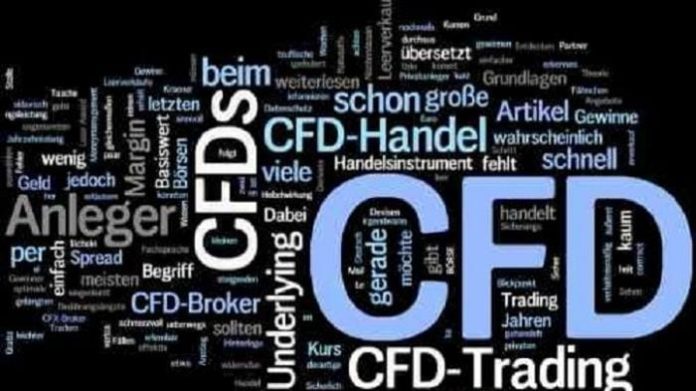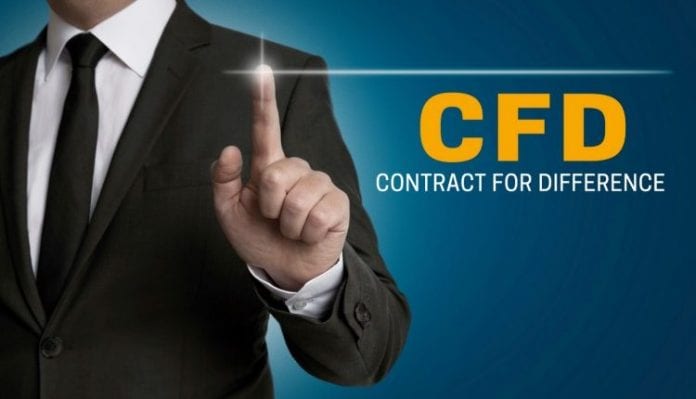CFDs (Contracts for Difference) are specialized over-the-counter financial derivatives alternative products that allow you to trade on the movement of financial assets. CFDs offer an alternative method of trading assets in the financial markets, so they are an important component of any investment portfolio. According to Ask Traders, many investors implement CFD trading strategies alongside other market instruments as a way of achieving maximized portfolio diversification. Some financial analysts have argued that it is quite difficult for new investors to understand CFDs, although this is an approach that has become a viable way for many people to enter into financial markets.

Many different types of financial assets are offered with CFD trading, so investors have access to stock indices, futures contracts, commodities, foreign exchange, and shares of individual stocks. These assets represent the general trading categories that are involved with CFDs. Under each category, there are various offerings that an investor can trade, so CFDs enable people to trade assets without owning the assets or have any rights to it. Trading in CFDs is often done alongside common assets and this is a strategy that is called derivative trading. Everything in CFD trading is based on the timeline of the trade and the contract itself. Before we talk about what CFD trading is all about, let us talk about indices, shares, and commodities in CFD transactions.
- Indices – These benchmarks track the value of certain stocks within a group and this serves to work as a gauge for the group’s overall performance. The value of an index is generally based on the value of large-cap stocks in a given region.
- Shares – These shares are based on the stock prices of individual companies. For CFD traders, the focus is on the price movements of the company in relation to the rest of the market.
- Commodities – Physical commodities (such as gold, oil, and copper) are tracked for their price movements and transactions are made without owning these commodities.
Differences in the contract are visible from the time each contract was created to the time it is exited. Based on the price differences, the seller pays you if there is a positive difference (gain), and you pay the seller if there is a negative difference (loss). The amount you gain or loss is the difference multiplied by the number of CFD units that are specified by the contracts. There are different trading methods such as: long positions and short positions.
- Commodity CFDs – UK Brent oil, US Crude oil, etc.
- Indices CFDs – GDAX, AUS200, UK100, SP500m, etc.
- Share CFDs – Apple, Johnson& Johnson, Amazon, Google, etc.
- Cryptocurrency CFDs – Bitcoin, Ethereum, Litecoin, etc.
In long positions, CFD brokers allow traders to purchase an asset with a goal to see the value go increase so that there is a positive difference at the end of the contract. In a short position, the trader enters when he feels that there will be a decline in asset value and a sales option or contract is activated. Now, the trader is expecting a negative price difference at the end of the contract, so that the trader receives gains paid at the corresponding value after the contract ends. If the value goes up, the trader would have to pay because the buyer would have a positive difference at the end of the contract.

Trading in CFD avenues allows traders the opportunity to trade both undated futures and contracts on short or long term CFD positions. There many are different trading platforms (such as MetaTrader) that offer investors trading access to the top market stock indices. The trading process starts with choosing the instrument that you intend to trade, and these instruments represent the asset that will be traded. After you select the instrument, you choose the position – are you going for a long position or short position? Now, choose your platform, and select different technical indicators that can give traders information as to where the market is going.
CFD Trading Specifics
- Spreads – simply the contract price difference.
- Deal size – depends on how much each investor trades. These trades are determined by the size of the contract.
- Duration – determines how long is the trade going to last. The specified contract parameters are called options, while most CFD trades are not fixed in duration.
- Profit and loss – based on the spread, it is simply the multiplication of the spread and the CFD units involved with the number of contracts.
As you can see, the above assets are traded normally in stock markets, crypto markets, and foreign exchange markets but CFD trading offers an alternative to these markets, and that’s why it is called over-the-counter by expert traders.
Pros in CFD Trading
- Leverage – investors only need to deposit only a percentage as low as 2% for trading. After well-researched approaches are tested and tried out as an investigation into the asset, traders can invest more.
- No stamp duty – since a trader doesn’t own a part of the shares that he trades, the trader doesn’t incur stamp duties.
- Massive asset range – you get to trade different assets, all within one market.

Cons
Leverage – this can be a pain for the trader if it doesn’t favor the position. If investors trade more on a share asset, and the margin of the asset drops, you are either forced to close the contract or add more funds. This can cause massive losses if trades are not managed properly.
Overnight fees – investors have to pay for holding a leveraged position overnight.
No asset ownership – investors in CFDs don’t own shares within the company, it’s just a contract which is based on the shares or other assets involved in the contract.
Every financial market comes with its own set of risks. Essentially, it is up to the intending trader to know what this entails, and know how to go about it. Losses could easily be incurred if you don’t have a good understanding of the market. Go slow, and keep trying. Knowledge gathering is an important process in the trading business. What are the indicators that make it go up or down in price? Why is it in the news today? How is it going to affect the value? All of this information needs to be considered every time.









